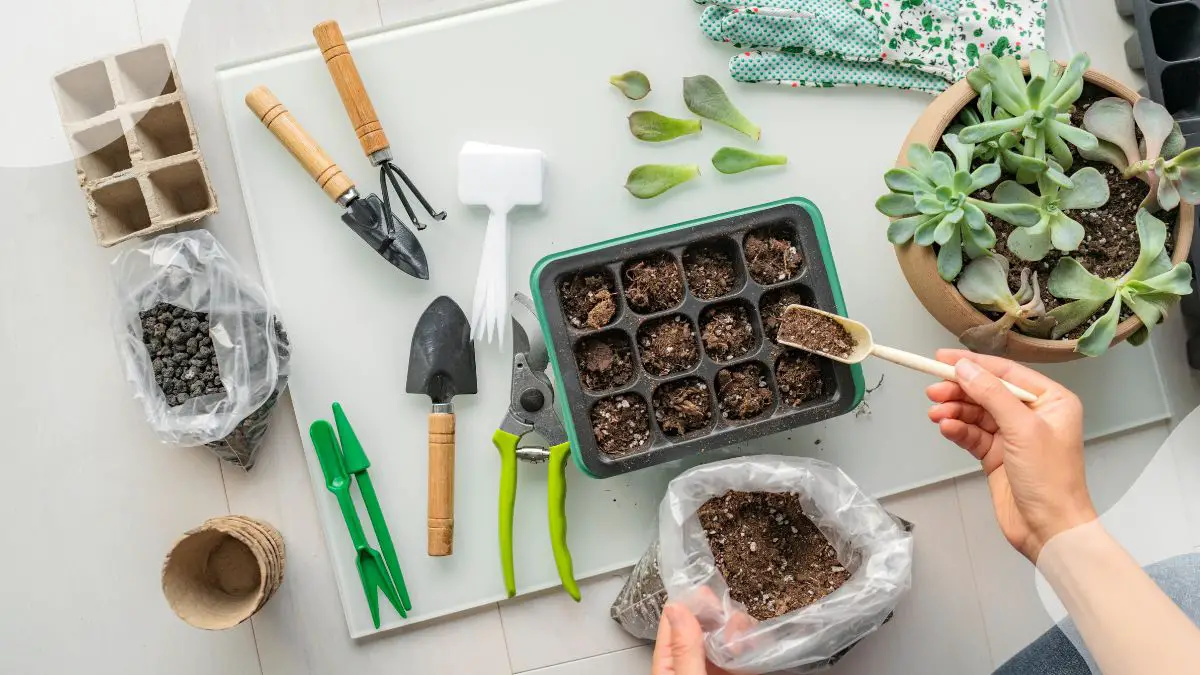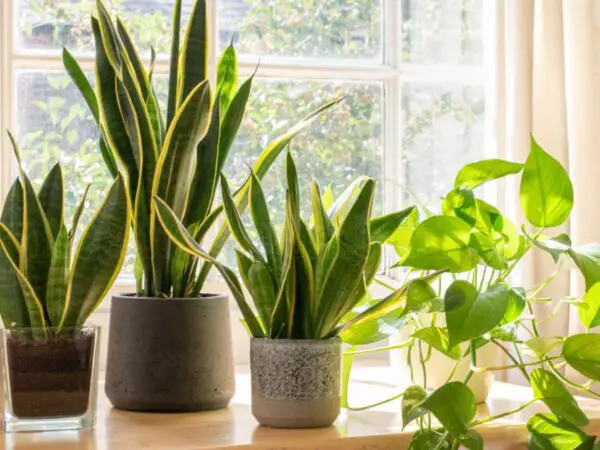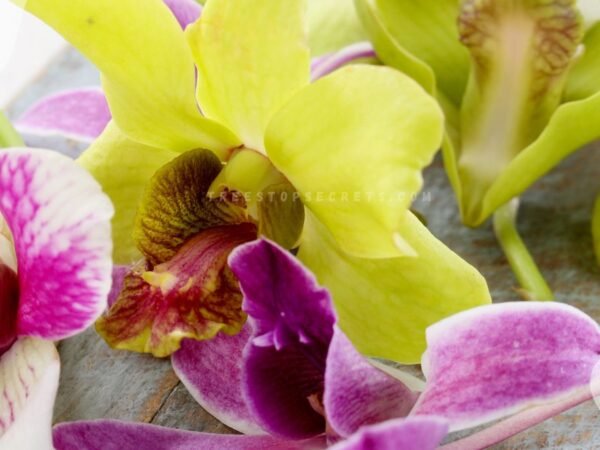Discover how to tackle the pesky issue of moldy soil in your indoor plants. While indoor greenery, like houseplants, adds life to your space, dealing with moldy patches and moldy conditions can be a dampener. Uncover practical tips and tricks to prevent and address mould growth in your beloved potted houseplant companions.
Unveil the secrets to maintaining healthy soil conditions that keep mold at bay. Say goodbye to the musty smell and unsightly appearance that mold brings, and welcome a thriving indoor garden that uplifts your surroundings. Learn how simple adjustments in watering routines and plant care practices can make a world of difference in combating mold growth.
Key Takeaways
- Recognize Mold Signs: Look for white, green, or black fuzzy growth on the soil's surface as an indication of mold presence.
- Identify Causes: Understand that overwatering, poor drainage, and lack of sunlight can contribute to mold growth in indoor plant soil.
- Be Aware of Plant Health: Mold in soil can lead to root rot, stunted growth, and overall decline in plant health.
- Take Immediate Action: Remove moldy soil, trim affected roots, and repot the plant in fresh, well-draining soil to combat mold issues promptly.
- Prevent Future Mold: Adjust watering frequency, improve air circulation, and choose suitable containers to reduce the risk of mold growth in indoor plant soil.
- Implement Long-Term Care: Consider using natural fungicides, monitoring plant health regularly, and maintaining a balanced environment for sustained mold prevention efforts.
Recognizing Mold in Soil
Mold Appearance
Mold on indoor plant soil appears as fuzzy patches or powdery growths. The presence of mold, or mould, typically indicates excessive moisture levels in the soil. Common colors of mold on houseplant soil include white, green, black, or brown. e molds may have a fluffy texture, while others appear slimy or powdery.
Identifying Mold Types
Different types of mold found on indoor plant soil can vary in color and texture. Specific mold types can be identified based on their appearance and characteristics. Recognizing different mold types is crucial for implementing the appropriate treatment.
Mold vs. Harmless Fungi
Harmful mold in houseplant soil poses risks to plant health and can spread rapidly. Beneficial fungi, however, contribute to soil health and plant growth. While harmless fungi coexist with plants without causing harm, mold can lead to root rot and other issues.
Causes of Moldy Soil
Overwatering Issues
Overwatering leads to mold growth as excess moisture creates ideal conditions for mold spores. The lack of oxygen causes roots to rot.
Waterlogged soil from overwatering can suffocate plant roots, leading to stunted growth and yellowing leaves. To avoid overwatering, let the soil dry between watering sessions.
Poor Drainage
Poor drainage contributes to mold growth by trapping excess water in the soil, creating a breeding ground for mold. Proper drainage is crucial for plant health.
Ensure pots have drainage holes to allow excess water to escape. Adding pebbles or perlite at the bottom of the pot can improve drainage and prevent mold formation.
Contaminated Soil
Contaminated soil can introduce mold spores and other pathogens, including mould, that thrive in damp conditions. Sources of contamination include infected plants, contaminated water, and unsterilized gardening tools.
Prevent soil contamination by using sterilized potting mix, practicing good hygiene when handling plants, and regularly cleaning and disinfecting gardening equipment.
High Humidity Levels
High humidity levels encourage mold growth as moisture evaporates slowly from the soil. Mold thrives in humid environments, spreading rapidly in warm, damp conditions.
Maintain humidity levels between 40-60% to discourage mold growth. Use a dehumidifier or increase air circulation around plants to reduce moisture in the air.
Mold Impact on Plants
Health Risks
Moldy soil poses health risks to houseplants as it can lead to fungal growth, affecting plant health. The presence of mold on soil can result in the spread of harmful spores, potentially causing respiratory issues for individuals nearby. Mold-infested soil may attract pests that can further harm the plants.
The impact of mold on soil goes beyond aesthetics; it directly affects the health and growth of indoor plants. Mold competes with the plant for essential nutrients, hindering proper absorption and leading to nutrient deficiencies. As a result, plants may show signs of stunted growth, yellowing leaves, or overall wilting due to the lack of vital nutrients necessary for healthy development.
Over time, the long-term effects of moldy soil, or mould, on indoor plants can be detrimental. Continual exposure to mold can weaken the plant's immune system, making it more susceptible to diseases and pest infestations. Furthermore, persistent mold growth can eventually lead to plant death if left untreated, impacting the overall indoor plant ecosystem.
Growth Effects
The presence of mold, or mould, on soil can significantly impede the growth and development of houseplants. Mold competes with plants for resources such as water and nutrients, creating an imbalance that hinders optimal growth. This competition for resources can lead to reduced photosynthesis and overall plant productivity.
Moreover, mold on soil, or mould, can alter the nutrient uptake process of plants by inhibiting their ability to absorb essential minerals effectively. As a result, plants may exhibit symptoms like leaf discoloration, leaf drop, weak stems, or mould due to the lack of proper nutrition caused by mold infestation. These growth issues can stunt the overall development and vitality of indoor plants.
Examples of growth problems caused by moldy soil, including root rot, where the roots become waterlogged and decay due to excess moisture retention from mold growth. Mold-infested soil, also known as mould, can lead to poor aeration around the roots, suffocating them and impeding their ability to uptake nutrients efficiently. These issues collectively contribute to compromised plant health and hindered growth potential.
Addressing Moldy Soil
Removing Mold
To remove mold or mould from indoor plant soil, start by gently scraping off the moldy layer. Next, replace the top layer of soil with fresh, sterile potting mix. Ensure proper drainage to prevent future mold growth. Consider using natural remedies like cinnamon powder or commercial fungicides for effective mold removal. Thoroughly clean pots and trays to eliminate any remaining spores.
Soil Treatment
When addressing soil mold issues, opt for well-draining soil mixtures to promote healthy root growth and prevent water stagnation. Incorporate perlite or sand into the soil mix for improved aeration. Avoid overwatering, as excessive moisture can lead to mold growth. Regularly inspect plants for signs of mold and promptly address any issues to prevent spreading.
Plant Recovery
Indoor plants can recover from moldy soil conditions with proper care and attention. Signs of plant recovery include vibrant foliage, new growth, and healthy root development. Support plant recovery by providing adequate sunlight, proper watering, and regular fertilization. Prune any damaged or infected parts to encourage new growth and overall plant health.
Preventing Mold Growth
Watering Tips
To prevent mold growth in indoor plant soil, water plants only when the top inch of soil is dry. Consistent watering helps maintain plant health by preventing excessive mold growth. Determine the right amount of water by considering each houseplant's specific needs.
- Water plants when the top inch of soil is dry
- Consistent watering maintains plant health
- Consider each houseplant's specific watering needs
Enhancing Drainage
Enhance drainage in indoor plant pots by using pots with drainage holes to prevent pesky mold. These holes prevent water accumulation, reducing the chances of dormant mold spores causing issues. Opt for pots with optimal drainage features to promote healthy plant growth.
- Use pots with drainage holes to prevent mold
- Drainage holes reduce water accumulation
- Opt for pots with optimal drainage features
Air Circulation
Proper air circulation is crucial in preventing mold on houseplant soil as it reduces moisture levels. Improved airflow around plants inhibits the development of future mold infections. Enhance air circulation by placing plants in areas with good ventilation.
- Airflow reduces moisture levels around plants
- Good ventilation inhibits future mold infections
- Place plants in areas with improved air circulation
Sunlight Exposure
Sunlight exposure plays a key role in preventing mold growth on soil by aiding in soil drying. Adequate sunlight helps reduce moisture content, preventing future mold issues. Position indoor plants near windows or under grow lights to ensure they receive sufficient sunlight.
- Sunlight aids in drying out soil
- Reduce moisture content to prevent mold issues
- Position plants near windows for adequate sunlight
Long-Term Solutions
Organic Matter Balance
Maintaining a balanced organic matter level in soil is crucial for preventing mold growth. Excessive organic matter can create a moist environment, ideal for mold to thrive. To manage this, ensure proper aeration and drainage in the soil to prevent waterlogging.
To prevent mold issues, consider adding compost or peat moss to improve soil structure and drainage. Regularly turning the soil can also help distribute organic matter evenly, reducing the risk of mold growth. Incorporating aeration holes in the soil can enhance airflow and reduce moisture accumulation.
Regular Monitoring
Regular monitoring of indoor plant soil is essential to detect mold growth early. By checking the soil frequently, you can identify any signs of mold and take immediate action. Establishing a routine inspection schedule, such as weekly checks, can help you stay proactive in managing mold issues.
To monitor effectively, inspect the soil for any unusual odors, white spots, or slimy textures that indicate mold presence. If mold is detected, remove the affected soil immediately and adjust watering practices to prevent further mold development. Consider using a magnifying glass to spot mold spores that may not be visible to the naked eye.
Adjusting Plant Care
Adjusting plant care practices is key to preventing moldy soil in indoor plants. Understanding each plant's specific watering needs and light requirements is essential for maintaining healthy soil conditions. Overwatering can lead to excess moisture, creating an ideal environment for mold growth.
To prevent mold, water plants only when the top layer of soil feels dry to the touch. Ensure proper drainage holes in plant pots to allow excess water to escape. Moreover, placing plants in areas with sufficient sunlight can help dry out the soil and reduce moisture levels.
Closing Thoughts
By recognizing mold in your indoor plants' soil, understanding its causes, and addressing it promptly, you can prevent further damage to your beloved greenery. Mold not only affects the appearance of your plants but also their overall health and growth. Taking action to combat moldy soil will ensure that your indoor garden thrives in a clean and healthy environment. Implementing long-term solutions and preventive measures can safeguard your plants from future mold infestations, allowing them to flourish and brighten up your living space.
Now that you are equipped with knowledge on identifying, preventing, and managing moldy soil in your indoor plants, take proactive steps to maintain a mold-free environment for your botanical companions. Your dedication to their well-being will be reflected in their lush foliage and vibrant blooms. Stay vigilant and attentive to your plants' needs to enjoy a thriving indoor garden.
Frequently Asked Questions
How can I recognize mold in soil?
To recognize mold in soil, look for white, grey, or black fuzzy patches on the surface. A musty odor is also a sign of mold growth in the soil.
What are the causes of moldy soil?
Moldy soil can result from overwatering, poor drainage, lack of sunlight, overcrowding plants, contaminated potting mix, or using dirty containers.
How does mold impact indoor plants?
Mold can lead to root rot, hinder nutrient absorption, weaken plant health, and stunt growth. It may also cause wilting leaves and a decline in overall plant vigor.
What are effective ways to address moldy soil?
Address moldy soil by removing affected plants, replacing contaminated soil, improving drainage, adjusting watering practices, increasing air circulation, and isolating infected plants.
How can I prevent mold growth in indoor plant soil?
Prevent mold growth by using well-draining soil, allowing the soil to dry between waterings, avoiding overwatering, providing adequate light and ventilation, and maintaining cleanliness in your gardening tools.
What are some long-term solutions for dealing with moldy soil?
Long-term solutions include repotting plants regularly, practicing proper watering techniques, inspecting plants frequently for signs of mold growth, ensuring proper air circulation around plants, and maintaining a clean growing environment.
Image Source: Paid image from CANVA





